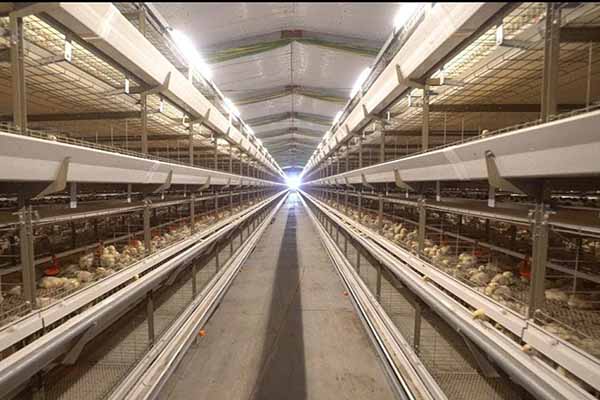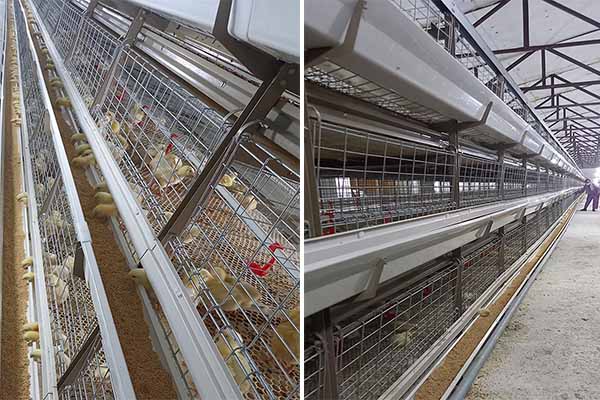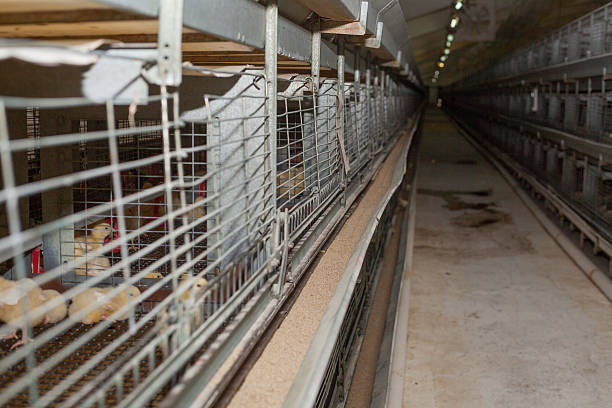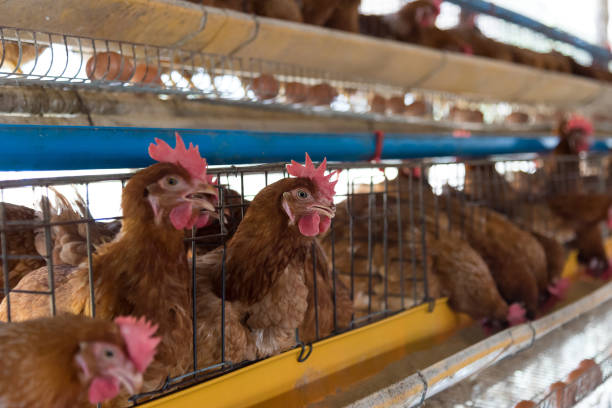Durable Steel Wire Cages: Optimizing Layer Hen Production in Africa
Durable Steel Wire Cages: Optimizing Layer Hen Production in Africa
Africa’s agricultural landscape is rapidly evolving, with poultry farming playing an increasingly vital role in food security and economic empowerment. Layer hen production, in particular, holds immense potential, but realizing this potential hinges on adopting efficient and sustainable farming practices. Durable steel wire cages represent a significant step forward in this direction, offering a robust and effective solution for optimizing layer hen production across the African continent.
The Rising Demand for Eggs in Africa
The demand for eggs in Africa is experiencing a substantial surge, driven by a growing population, rising incomes, and a greater awareness of the nutritional benefits of eggs. Eggs are a readily available source of protein, essential vitamins, and minerals, making them a crucial component of a balanced diet. This escalating demand presents a significant opportunity for poultry farmers to expand their operations and contribute to meeting the nutritional needs of the continent. However, traditional farming methods often struggle to keep pace with this demand, highlighting the need for more productive and efficient approaches.
Challenges Facing Layer Hen Production in Africa
Despite the promising potential, layer hen production in Africa faces a number of challenges. These challenges can be broadly categorized as follows:
Disease Management: Poultry diseases can decimate entire flocks, causing significant financial losses for farmers. Disease outbreaks are often exacerbated by poor sanitation, overcrowding, and inadequate biosecurity measures.
Predation: Free-range systems are particularly vulnerable to predation from wild animals and birds of prey, which can significantly reduce flock sizes and egg production.
Climate Variability: Extreme temperatures, humidity, and rainfall can negatively impact hen health and productivity. Heat stress, in particular, can lead to reduced feed intake, lower egg production, and increased mortality rates.
Feed Costs: Feed represents a major expense in layer hen production. Fluctuations in feed prices can significantly impact profitability, making it essential to optimize feed efficiency.
Management Practices: Inefficient management practices, such as inadequate ventilation, poor waste management, and improper lighting, can all contribute to reduced egg production and increased disease risks.
Infrastructure limitations: Limited access to reliable electricity and clean water, especially in rural regions, can hinder optimal poultry farming practices.
Why Steel Wire Cages? An Overview of the Benefits
Durable steel wire cages offer a practical solution to many of the challenges outlined above, providing a controlled and secure environment that promotes hen health, productivity, and overall farm efficiency. Here is an overview of their compelling advantages:
Enhanced Biosecurity: Cages significantly reduce the risk of disease outbreaks by limiting contact between birds and preventing the spread of pathogens through contaminated litter or soil. This is particularly important in regions where diseases like avian influenza and Newcastle disease are prevalent.
Improved Predator Protection: Cages provide a physical barrier against predators, eliminating the risk of losses due to predation. This is a significant advantage over free-range systems, especially in areas with high predator populations.
Optimized Climate Control: Cages allow for better climate control, enabling farmers to maintain optimal temperatures and humidity levels within the poultry house. This can help to mitigate the negative impacts of extreme weather conditions and improve hen comfort and productivity.
Efficient Feed Management: Cages facilitate precise feed distribution, ensuring that each hen receives an adequate amount of nutrition. This minimizes feed wastage and improves feed conversion ratios, leading to cost savings.
Better Egg Collection: Cages simplify egg collection, reducing the risk of egg breakage and contamination. This improves egg quality and marketability.
Reduced Labor Costs: Cage systems require less labor compared to traditional floor systems. This is because tasks such as feeding, watering, and egg collection can be automated, reducing the need for manual labor.
Higher Stocking Density: Cages allow for higher stocking densities compared to floor systems, maximizing the utilization of available space and increasing overall production capacity.
Improved Manure Management: Cages facilitate efficient manure collection and removal, improving sanitation and reducing the risk of ammonia buildup. Manure can be composted and used as fertilizer, providing an additional revenue stream for farmers.
Durability and Longevity: Steel wire cages are designed to withstand the rigors of poultry farming, providing a long-lasting and reliable housing solution. High-quality galvanized steel is resistant to corrosion and rust, ensuring that the cages maintain their structural integrity for many years.
Types of Steel Wire Cages for Layer Hens
Several types of steel wire cages are available for layer hens, each offering unique features and benefits. The most common types include:
A-Frame Cages: A-frame cages are a traditional design that consists of rows of cages arranged in an A-shape. They are relatively inexpensive and easy to maintain.
H-Frame Cages: H-frame cages are a more modern design that offers better ventilation and ease of access for management. They are typically more expensive than A-frame cages but provide a more comfortable environment for hens.
Flat-Deck Cages: Flat-deck cages consist of multiple tiers of cages stacked on top of each other. They maximize space utilization and are often used in large-scale commercial operations.
Battery Cages: Battery cages are a type of flat-deck cage that is designed to house a large number of hens in a small space. They are controversial due to animal welfare concerns and are being phased out in some countries.
Enriched Cages: These cages are designed to provide hens with more space, perches, and nesting areas. They represent a compromise between traditional battery cages and free-range systems, aiming to improve animal welfare while maintaining the benefits of cage systems.
When selecting steel wire cages, it is essential to consider factors such as the size of the farm, the desired stocking density, the climate, and the budget. It is also important to choose cages from a reputable supplier that offers high-quality materials and construction. Livi Machinery is one such reliable supplier with years of experience in the design, manufacture, and installation of poultry cages. They could provide the excellent poultry equipment depending on your requirements.
Implementing Steel Wire Cages in Africa: Best Practices
To maximize the benefits of steel wire cages, it is essential to implement best practices in poultry management. These include:
Proper Cage Installation: Ensure that cages are properly installed according to the manufacturer’s instructions. Cages should be level, stable, and well-ventilated.
Optimal Stocking Density: Maintain optimal stocking densities to prevent overcrowding and stress. Overcrowding can lead to increased disease risks, reduced egg production, and cannibalism. Different breeds have different space requirements, so it is important to consult with a poultry expert to determine the ideal stocking density for your flock.
Regular Cleaning and Disinfection: Clean and disinfect cages regularly to prevent the buildup of pathogens. Remove manure and dead birds promptly to maintain good sanitation. A regular cleaning schedule is essential for preventing the spread of diseases.
Adequate Ventilation: Ensure adequate ventilation to remove ammonia and other harmful gases from the poultry house. Proper ventilation will improve air quality and reduce the risk of respiratory diseases.
Effective Waste Management: Implement an effective waste management system to collect and dispose of manure properly. Manure can be composted and used as fertilizer or processed into biogas.
Balanced Nutrition: Provide hens with a balanced diet that meets their nutritional requirements for egg production. Consult with a poultry nutritionist to develop a feeding program that is tailored to your specific needs.
Disease Prevention and Control: Implement a comprehensive disease prevention and control program. This includes vaccination, biosecurity measures, and regular monitoring of flock health.

Professional Veterinary Care: Establish a relationship with a qualified veterinarian who can provide expert advice and treatment for your flock. Regular veterinary checkups are essential for identifying and addressing health problems early.
Watering System: Ensure that your hens have access to clean and fresh water, using nipple drinkers or bell drinkers. Regularly clean and sanitize watering system to prevent the growth of algae and bacteria.
The Economic Impact of Steel Wire Cages
The adoption of steel wire cages can have a significant positive impact on the economics of layer hen production in Africa. By improving productivity, reducing disease risks, and minimizing labor costs, cages can help farmers to increase their profitability.
The investment cost of a steel wire cage system can be recovered over time through increased egg production, reduced feed costs, and lower labor expenses. In addition to the economic benefits for individual farmers, the widespread adoption of steel wire cages can contribute to the growth of the poultry industry in Africa, creating jobs and stimulating economic development.
Addressing Animal Welfare Concerns
While steel wire cages offer numerous benefits for layer hen production, they have also been the subject of debate due to animal welfare concerns. Some argue that cages restrict the natural behaviors of hens and can lead to stress and frustration.
However, advancements in cage design have led to the development of enriched cages that provide hens with more space, perches, and nesting areas. These enriched cages aim to improve animal welfare while maintaining the benefits of cage systems.
It is important to note that animal welfare is a complex issue with many different perspectives. Farmers should strive to adopt practices that promote the well-being of their hens while also ensuring the economic viability of their operations. Consultation with animal welfare specialists and implementing best management practices can significantly improve the living conditions and overall health of laying hens in cage systems.

Conclusion: Embracing Innovation for Sustainable Poultry Farming
Durable steel wire cages represent a valuable tool for optimizing layer hen production in Africa. By providing a controlled and secure environment, cages can help farmers to overcome many of the challenges that they face and to increase their productivity and profitability. While animal welfare concerns must be taken into account, advancements in cage design and best management practices can help to mitigate these concerns.
As Africa’s poultry industry continues to grow, the adoption of innovative technologies such as steel wire cages will be essential for ensuring sustainable and efficient production. By embracing these technologies and implementing best practices in poultry management, African farmers can contribute to food security, economic development, and the improved livelihoods of their communities. With careful planning, diligent management, and a commitment to animal welfare, steel wire cages can play a key role in transforming layer hen production across the continent.





